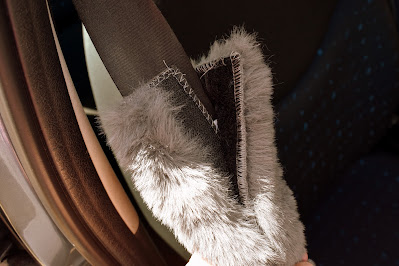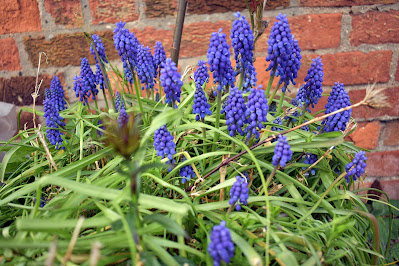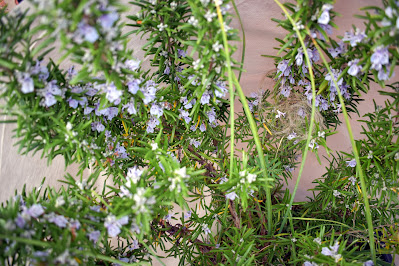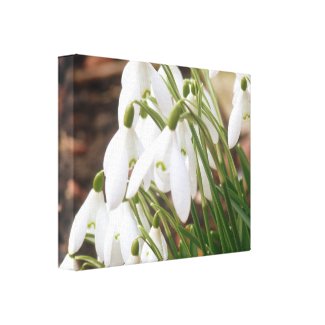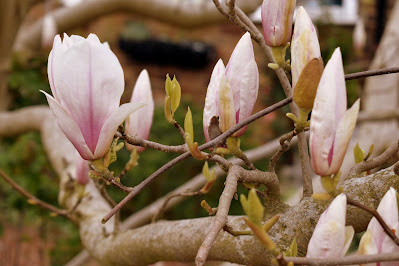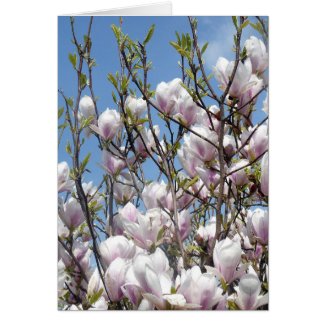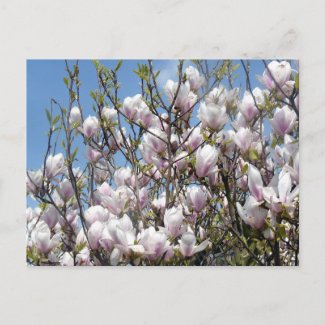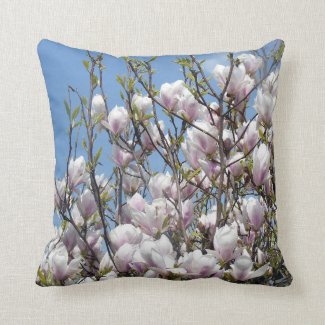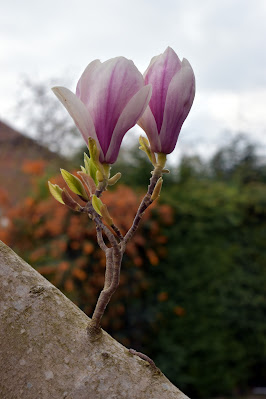Tuesday, June 28, 2022
The Benefits Of Seatbelt Protectors Reviewed
Tuesday, June 14, 2022
Advantages and Disadvantages Of Moving House With Plants Reviewed
I know that within the next few years we will likely move house. We have put a lot into our garden which will be the hardest aspect of our home to leave. For our house move we are hoping to find a smaller house and a bigger garden!
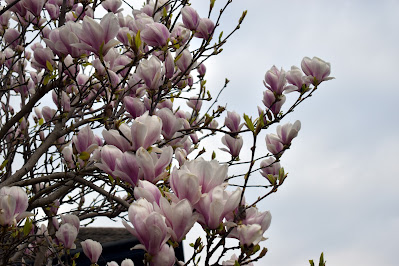
Removing Plants From Your Garden When Selling
I have learned that it is important to check as inground plantings are often considered part of the property or a fixture. So if you are planning to remove a significant proportion of plantings or obvious plant from your garden it is best to indicate those exclusions in the listing process. If it is decided later than this to remove planting, an amendment should be made with the buyers agreement. It is always best to fully disclose exactly what you are planning to take from the garden. Do always check the law/rules in your country/state exactly the situation when selling.
Five Options To Move House With Your Garden Plants.
1. Dig Up Plants And Move Into Containers Before Selling.
2. Take Cuttings Of Your Plants And Gather Seeds Before Selling Your Home

3. Negotiate With Buyers About The Plants.
4. Ask Buyers If You Can take Unwanted Plants.
5. Take Photographs Of Your Garden And Plants
Tools For Taking Plant Cuttings And Moving Plants
Advantages To Taking Your Existing Plants
Disadvantages To Taking Your Plants
More Gardening Articles
Tuesday, May 31, 2022
Growing Magnificent Magnolias In The Garden Reviewed
When we moved here many years ago we inherited a gorgeous Magnolia tree. If you have a garden and suitable conditions I would recommend growing a Magnolia.
There are many types from small trees to very large trees. Colours are so beautiful and range from a shell-like pink, dark pink, yellow, purple, red and white. If I could I would have one of each.
The Beauty Of A Magnolia
It is true that the flowers only last a few weeks or just over a month in Spring but they are so worth waiting for each year and for me signal that Spring is truly here and the poor weather is mostly behind us. It is a sign of hope, of joy and more than once has made my heart full of happiness.
Nothing lifts my spirits quite like looking out of the window on a spring morning to see our beautiful Magnolia in full bloom its delicate yet robust flowers carried proudly on bare stems.
Magnolia generally flower on bare stems so you just see the beautiful flowers carried on bare branches. As the flowers fade the leaves come in, gorgeous soft green leaves that last all summer and well into autumn.
Winter gives us the bare branches that have their own architectural splendor especially when snow or frost lies on the branches. We drape the bare branches in festive lights which look very pretty.
Magnolias are fascinating. They are an ancient tree primarily pollinated by beetles. Flying insects and bees may well visit now to take advantage of any pollen, but they are not what Magnolia originally sought to attract.
However, do not worry you will not be overrun with beetles as you really do not often even see them.
Magnolias come in a wide variety of sizes and colours. They usually carry gorgeous tulip shaped flowers or in the case of Stellata, a star shaped flower.
Most are deciduous but there are a few that are evergreen though these will usually require a more sheltered place. If you want fragrance then there are Magnolias with scent.
Magnolias can grow to be very large but we can also buy smaller varieties more suitable for smaller town gardens. It is really a case of checking the full grown size of the tree.
This is not however a quick growing plant. We will need to have patience for it to grow over ten or even twenty years. However, it is still so very beautiful in its younger years, it is always worth introducing a Magnolia into a garden.
I know we will be leaving this house and garden in the next few years so I have bought two smaller magnolia varieties which I am growing on in pots that will be ready to plant out in our new garden once we move.
It may be that we do not get to see them full-grown but they will bring us so much pleasure as they grow from beautiful delicate buds to full gorgeous blooms with lovely green leaves.
Magnolia Soil Conditions And Watering
Magnolias love neutral to slightly acidic soil which is free draining. Our soil is slightly acidic but is heavy clay and our magnolia has grown very well. This is perhaps as our soil is very fertile which is also something Magnolias love.
However, not everyone will have acidic soil so if you have alkaline soil and want to grow a Magnolia you are best to buy Magnolia Grandiflora or Magnolia Delavayi.
It is best to plant your Magnolia in a sunny spot. If it is sheltered as well that is a bonus as the flowers won't be blown off so much by the wind or so damaged by frost.
A good rule of thumb is that the colder the area you live in choose a later flowering variety. That way you will be less troubled by frost and cold winds damaging the flowers or tree. Good varieties for cold areas are Magnolia Apollo or Magnolia Caerhays Surprise.
A grown magnolia takes care of itself with regards to water, in fact, you can do more harm than good watering it once it is well established. Naturally, its roots will go down to seek water so best to leave it alone. The last thing you want is for the roots to grow upwards seeking the water you are providing.
However, in its first year it will need good deep watering and maybe also in its second year, you can give it deep drinks of water. It is always a good idea to mulch around a Magnolia of any age each year with bark.
Pruning A Magnolia
This plant has specific pruning needs but do not be worried by this. If you have planted it in an appropriate area for its size pruning will be minimal.
Each year after flowering check it over for any broken or crossing branches and prune those out completely.
Be careful not to prune too much as Magnolias can become stressed and cease to flower. A good rule is no more than a third of the plant is pruned each year.
Sadly our naturally huge magnolia was planted by previous occupants really too close to the house so we have to prune it rather more than I would like to keep it smaller than its natural size.
We are careful though to prune only up to a third each year and over the last 20 years have left at least one year in every 3 where we do not prune anything except broken or crossing branches.
A smaller magnolia or one that has more space to grow naturally may well only need pruning once every few years.
If you have a Magnolia only ever prune it after it has finished flowering and the green leaves are growing in. Mid-summer is a perfect time. If you prune in the autumn you will cut off many of the flower buds.
Planting A New Magnolia.
it is a good idea to buy your Magnolia as a mature plant as you can afford. It will establish itself much better. However not too large a plant that it is difficult to plant easily. Also do your research as to variety, so that you know the fully grown tree will fit comfortably into the space available.
The roots of a Magnolia are surprisingly shallow so you don't need to dig a really deep hole. Do however make it wide enough so there is no competing grass around the plant.
The planting hole needs to be the same depth as the pot and we should be careful to treat it gently and not damage any roots. Firm in carefully and after watering deeply give it a good acidic mulch. Bark mulch is perfect for this purpose.
We give Magnolia the best chance if we plant it in Spring or late Autumn. Patience is a virtue though as a young newly planted magnolia may need a couple of years before it flowers well. However, I promise you it is well worth the wait.
Magnolia Flowers In The Home.
Each Spring I pick a few whole blooms or take the fallen petals and place them in a large bowl of water. This makes a pretty display. The petals are quite thick and sturdy so are easy to handle and float in the water. sometimes I also place whole flowers in the water to float which is a beautiful display.
Simply replace the petals every few days or if they start to go brown to keep the display fresh.
It really is a gorgeous way of having Magnolia flowers inside our homes to enjoy all day and evening.
Spring really is showtime for the Magnolia but it is a beautiful and majestic tree all year round.
I absolutely love Magnolias, they always lift my spirits after winter and I look forward to seeing their beautiful and exquisite flowers each and every year.
More Gardening Articles
Tuesday, February 22, 2022
Swiss Cheese Plant Reviewed House Plant And Fashion Trend
There was always a Swiss Cheese Plant in our home when I was growing up. I did not know then that its Latin name is Monstera, but as a striking and larger than average house plant, it is certainly appropriate. As a child, I loved its jungle feel and the fact that it was bigger than me!
It is a beautiful and stunning indoor plant. In the 1970's it was a staple houseplant in many people's homes and was a background feature along with other plants.
Now it is again a very popular houseplant but it has taken more of a center stage being used as a real statement plant in a prominent position and even as a fashion trend.
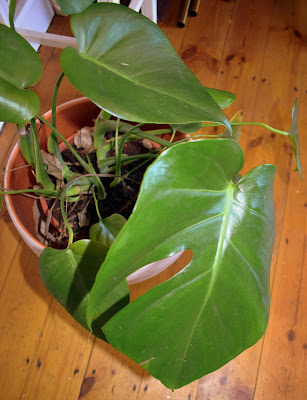
|
| Monstera Leaves and aerial roots. |
The Beauty Of A Swiss Cheese Plant
Grown as an indoor house plant this plant can grow to about 3 to 8 foot so it is a substantial house plant.
The leaves are pliable and very soft to touch and a pretty light or dark green glossy colour.
When the leaves are young they are of a solid heart shape. As they grow older the leaf develops splits in the leaf and this process gives it its name as it can look a little like swiss cheese.
It can grow large but we can also keep it at a manageable size to fit the space. Though if you can let it grow as large as it will it looks even more stunning.

|
| Mature Monstera Leaf With Split Against My Hand |
Native Growing Conditions Of The Monstera Or Swiss Cheese Plant
It is often useful and interesting to learn where the plants we have in our homes come from and what their native conditions are so we can better replicate them and keep them happy in our homes.
In native conditions in Central and South America, it grows under large trees in a jungle. In natural conditions, it can grow to up to seventy foot in height but it will not reach anywhere near this in a pot indoors. We can expect our plant to grow to approximately no bigger than eight foot if left to grow as big as it can.
Monstera does like to climb and has aerial roots which grow downwards from its main stem. As a houseplant, we can help it mimic its natural conditions by putting in strong support like a stake. As it can grow quite floppy and sprawling otherwise it can brace itself against the stake and do what it would in a jungle pushing itself onto a neighbouring tree or tangled vine for support as it grows upwards.
In its native conditions, this plant can flower a lovely white flower but it very rarely does as a houseplant. I have never seen a flower. So when you grow this plant indoors grow it for its beautiful glossy leaves of shades of green from light fresh green to mid and then dark green.

|
| Swiss Cheese Plant or Monstera |
Care of The Swiss Cheese Plant.
For such a big statement plant it requires remarkably little care. If you do not think you are good with houseplants then this is one that is hard to get wrong. I think it is one of the easiest plants I have.
It likes moist soil but never waterlogged, so regular consistent watering is best. As usual with house plants the best guide is the stick a finger about an inch into the soil if it is wet do not water but if dry or in this case nearly dry then water.
The soil should be water retentive but not too claggy so a good houseplant and compost mix on the neutral to acid side is best.
In its native situation it grows in the shade of large trees so do not place this plant in a sunny position. It needs a bright but shaded spot. It can cope with a few hours of the morning sun but absolutely no more than that.
As its large leaves can get dusty over time I like to take a cotton wool ball soaked in warm water and just gently wipe across the leaves. I only do this when they look dusty. This used to be one of my jobs when I was a child and I still enjoy doing it.
Monstera likes to be warm and loves humidity so an ideal situation is a heated bright bathroom where the light is filtered via blinds or obscured window panes and where the family take showers or baths.
Feed it regularly with Baby Bio or similar once a month and you will have a happy plant.
Swiss Cheese Plant Issues
It can have pests and diseases such as whitefly, mealybug, spider mites, powdery mildew to name a few but I have never had an issue and if you keep it in conditions it likes it will be healthy.
These infestations will rarely kill this plant anyway but look unsightly and weaken it so we have to control them and in this case I would use an insecticide or fungicide depending on the issue.
There are two things to watch for with the leaves. If you see a leaf or many leaves turning black then it is effectively that the plant has been sunburnt or scorched by being kept in a sunny place for too long.
The individual leaf cannot recover from this so the best thing is the prune away that leaf from the bottom of the stem. This will only happen if it has been exposed to too much direct sunlight so is easily avoided.
If you see the leaves turning yellow then we have overwatered. we must stop watering immediately, turn the pot and drain off any excess water and leave to dry. If very waterlogged we may be best repotting the plant into fresh dry soil and starting again with light watering.
While it likes moisture it hates sitting in wet soil so this can easily be avoided by only watering when the plant is nearly dry.
All parts of this plant are toxic to pets so it is best to keep it well away from them. Another reason a bathroom may be the best spot.
The plant featured here was one I bought as a sale plant a few months ago and I had to do a lot of pruning away of damaged leaves and sun scorched leaves. It was very large but uncared for. I have left one scorched leaf for you to see. This will need to be pruned away at the base. The plant was also unstable in its pot and rocking from its roots so I repotted in a new deeper pot so it is stable. My next job is to install firm support so it can climb.
I reduced the plant considerably in size but as you can see there is a lot of new growth and one leaf is already mature enough to have developed splits. So I was really happy I rescued this plant!
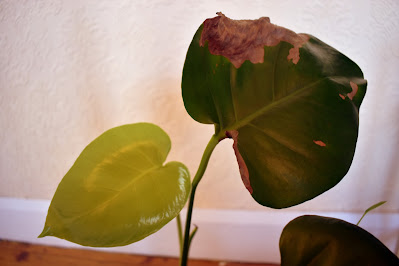
|
| Swiss Cheese Plant old sun damaged leaf next to new young leaf. |
Monstera In Fashion Trend
Who would have thought this plant would have become so fashionable. I tend not to grow plants indoors or outdoors for fashion trends but because I love them.
However, the trend is there for this plant to be used in wedding flowers, as centerpieces and large statement plants in prestigious offices.
People even cut a single stem with a large leaf on it and use it much as flower decoration in a vase of water, where it does look very striking.
It really suits an environment that is minimalist, clean and unfussy or where flowers would look too much. Its large size and dark glossy leaves do add understated style and substance.
There is even Monstera wallpaper which can look amazing as a real statement in the right place.
The Swiss Cheese Plant was so popular in the 1970's and then like many houseplants fell out of favour. However, now there is a thankfully increased appreciation of the beauty of houseplants and how good they are for us as well as looking beautiful and enhancing our home decor.
Fashion and trends come and go but I hope the love and appreciation for houseplants are here to stay now and I will never fall out of love with this amazing plant. It will grace our home with its simple stunning good looks for a very long time.
More Gardening And Houseplant Reviews
Care Of The Intriguing Carnivorous Venus Fly Trap House Plant Reviewed.Most Recent Reviews on Review This Reviews
Search for Reviews by Subject, Author or Title
The Review This Reviews Contributors
 Sylvestermouse
Sylvestermouse Dawn Rae B
Dawn Rae B MbgPhoto
MbgPhoto Brite-Ideas
Brite-Ideas Wednesday Elf
Wednesday Elf Olivia Morris
Olivia Morris Treasures by Brenda
Treasures by Brenda The Savvy Age
The Savvy Age Margaret Schindel
Margaret Schindel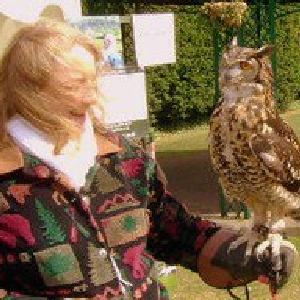 Raintree Annie
Raintree Annie Lou16
Lou16 Sam Monaco
Sam Monaco
 Renaissance Woman
Renaissance Woman BarbRad
BarbRad Bev Owens
Bev Owens BuckHawk
BuckHawk Decorating for Events
Decorating for Events Heather426
Heather426 Coletta Teske
Coletta Teske MissMerFaery
MissMerFaery Mickie_G
Mickie_G
Review This Reviews is Dedicated to the Memory of Our Beloved Friend and Fellow Contributor
We may be apart, but
You Are Not Forgotten




